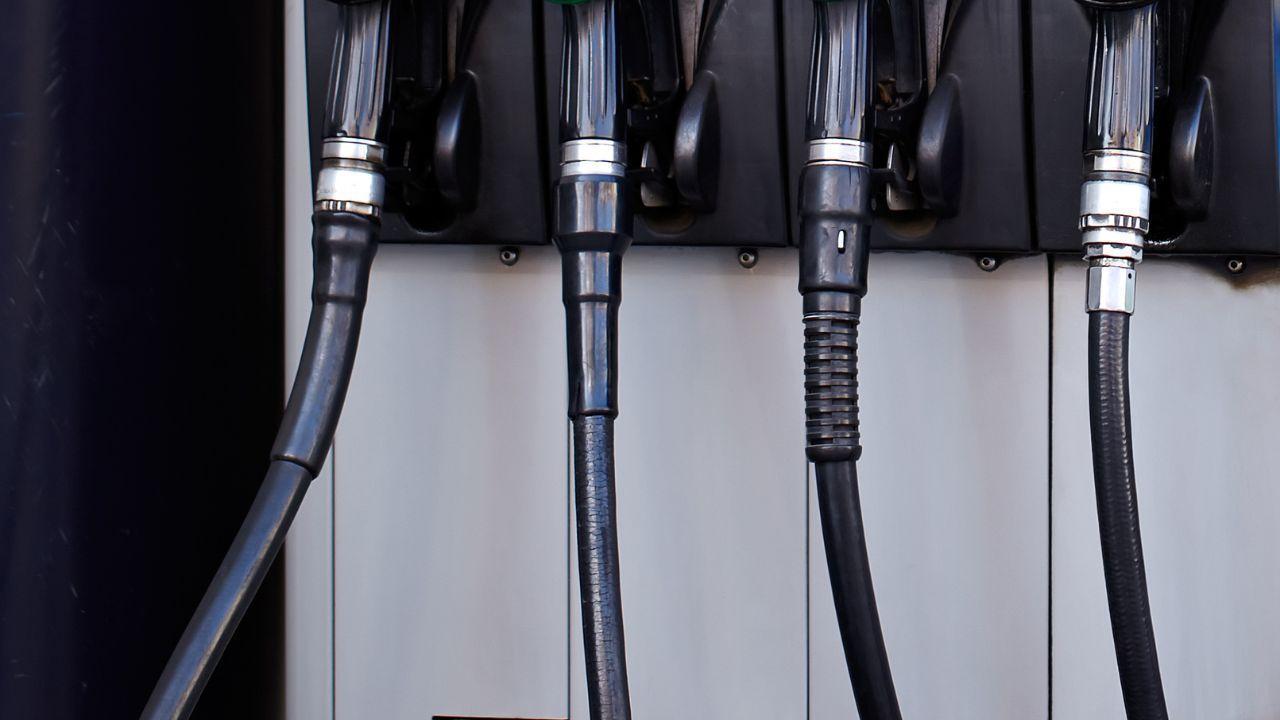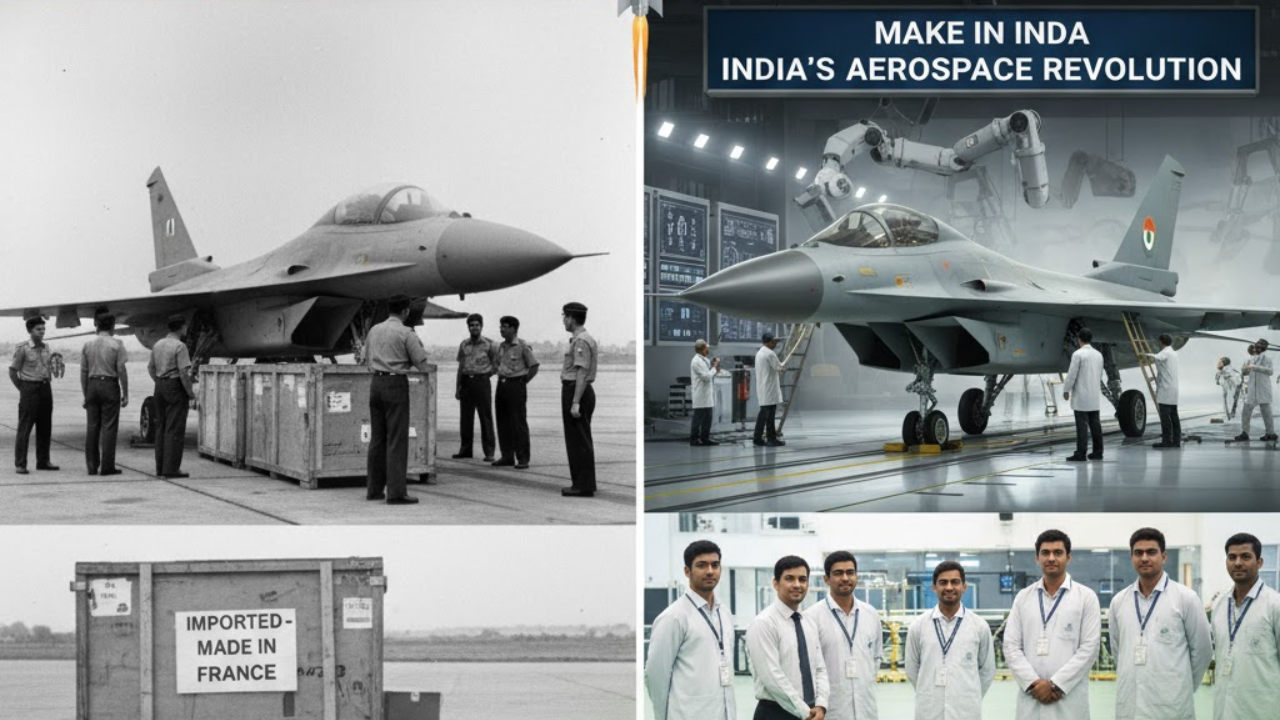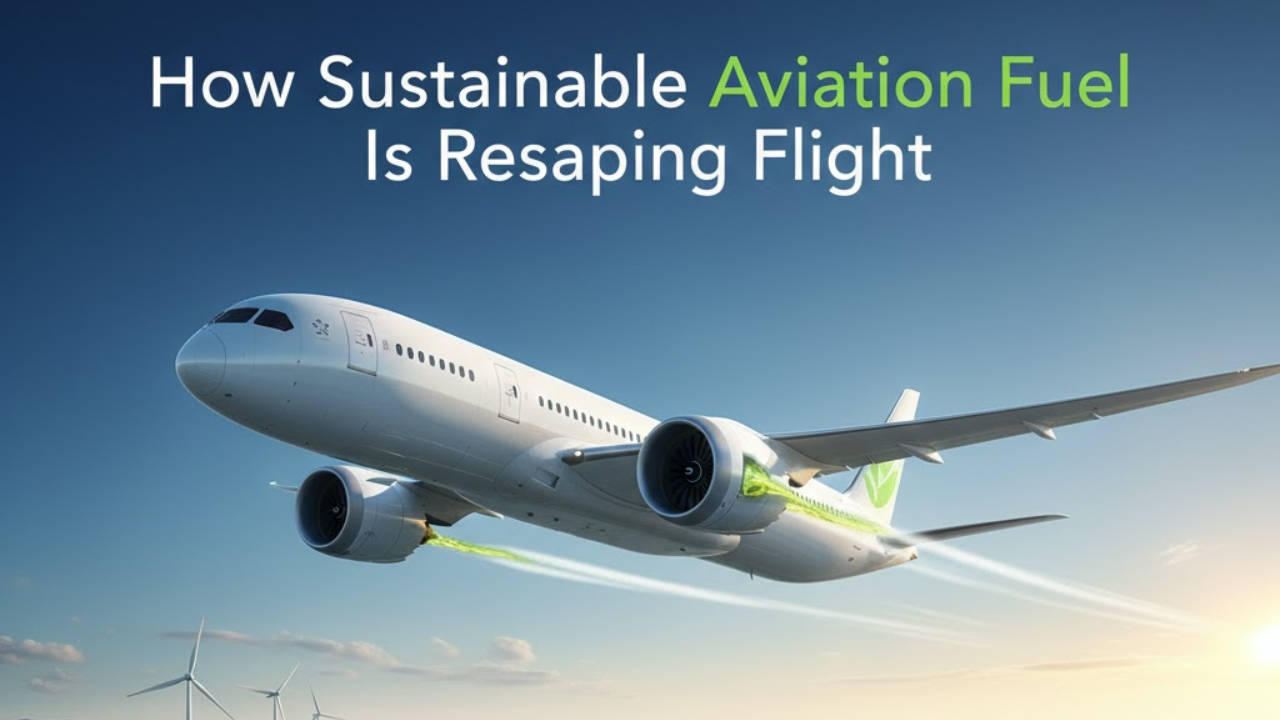
Post by : Meena Rani
India is taking important steps to make aviation more environmentally friendly. The Ministry of Civil Aviation has announced a plan to blend 5% Sustainable Aviation Fuel (SAF) into the country’s aviation fuel supply by 2030. This initiative is designed to reduce carbon emissions from air travel, improve energy security, and strengthen India’s role in global green aviation.
The government has set intermediate targets to ensure smooth implementation. By 2027, 1% of aviation fuel is expected to be SAF, increasing to 2% by 2028, before reaching the 5% target in 2030. These steps are part of India’s commitment to international aviation sustainability standards and global efforts to fight climate change.
What is Sustainable Aviation Fuel (SAF)?
Sustainable Aviation Fuel is a type of fuel made from renewable and environmentally friendly resources, such as agricultural residues, biomass, and used cooking oils. Unlike regular jet fuel, SAF produces significantly less carbon dioxide, reducing its overall impact on the environment. Some studies suggest that SAF can cut greenhouse gas emissions by up to 80% compared to traditional fuels.
SAF is considered a key solution for decarbonizing the aviation industry and making air travel cleaner for the future.
India’s SAF Blending Plan
The government’s approach to SAF blending is divided into stages:
1% blending by 2027: This is the first step to introduce SAF in the aviation sector.
2% blending by 2028: The SAF share will gradually increase as production and infrastructure expand.
5% blending by 2030: This final goal ensures India meets global sustainability standards and becomes a leader in SAF adoption.
This phased approach allows airlines, fuel producers, and regulators to adjust progressively and ensures that SAF supply keeps pace with demand.
Steps Taken to Make SAF a Reality
The Ministry of Civil Aviation has conducted a comprehensive feasibility study to identify the best ways to produce and distribute SAF in India. The study looks at available feedstock like biomass and agricultural waste, the technologies needed to produce SAF, the infrastructure requirements for blending and distribution, and supportive policies.
To discuss the study and implementation strategies, workshops and meetings have been held with experts from government agencies, aviation regulators, and industry leaders. These discussions aim to create a coordinated plan to make SAF widely available for Indian airlines.
India’s Potential as a SAF Producer
India has a significant advantage in producing SAF because of its abundant resources. The country generates more than 750 million metric tonnes of biomass and over 230 million metric tonnes of surplus agricultural residues every year. These materials can serve as feedstock for SAF production.
Indian Oil Corporation has become the first refinery in India to be certified to produce SAF. The Panipat Refinery marks a key milestone in domestic SAF production and demonstrates India’s growing capability to support sustainable aviation.
Benefits of SAF
The adoption of Sustainable Aviation Fuel is expected to bring many benefits:
Reduction in emissions: SAF can drastically lower carbon emissions, helping India meet environmental goals.
Energy security: Producing SAF domestically reduces dependence on imported fossil fuels.
Economic growth: The biomass-to-fuel value chain can provide new income opportunities for farmers and rural communities.
Global leadership: By adopting SAF, India positions itself as a global leader in sustainable aviation practices.
These benefits align with India’s broader vision of combining economic growth with environmental protection.
India’s plan to achieve 5% SAF blending by 2030 shows its dedication to green aviation and climate action. By utilizing domestic resources, encouraging industry participation, and following a structured roadmap, India is setting the stage for a more sustainable and environmentally responsible aviation sector. This initiative not only supports global efforts to reduce aviation emissions but also strengthens India’s energy independence and rural economy.
Sustainable Aviation Fuel, SAF blending, India aviation, emissions reduction










Bengaluru-Mumbai Superfast Train Approved After 30-Year Wait
Railways approves new superfast train connecting Bengaluru and Mumbai, ending a 30-year demand, easi

Canada Post Workers Strike Halts Nationwide Mail and Parcel Services
Canada Post halts operations as CUPW strike disrupts mail and parcel delivery nationwide amid disput

PM Modi Launches BSNL ‘Swadeshi’ 4G Network, 97,500 Towers Built
India enters global telecom league as PM Modi inaugurates BSNL’s indigenous 4G, connecting 26,700 vi

India’s Iconic MiG‑21 Takes Final Flight After Six Decades of Service
After 60 years India retires its MiG‑21 fighter jet, a legendary yet controversial warplane marking

Hindustan Zinc unveils AI hotspot monitoring at Debari smelter
Hindustan Zinc launches AI-powered Switchyard Hotspot Monitoring at Debari smelter to cut outages bo

Chinese experts worked inside sanctioned Russian drone plant
Chinese drone specialists visited IEMZ Kupol supplying parts and drones via intermediaries, deepenin